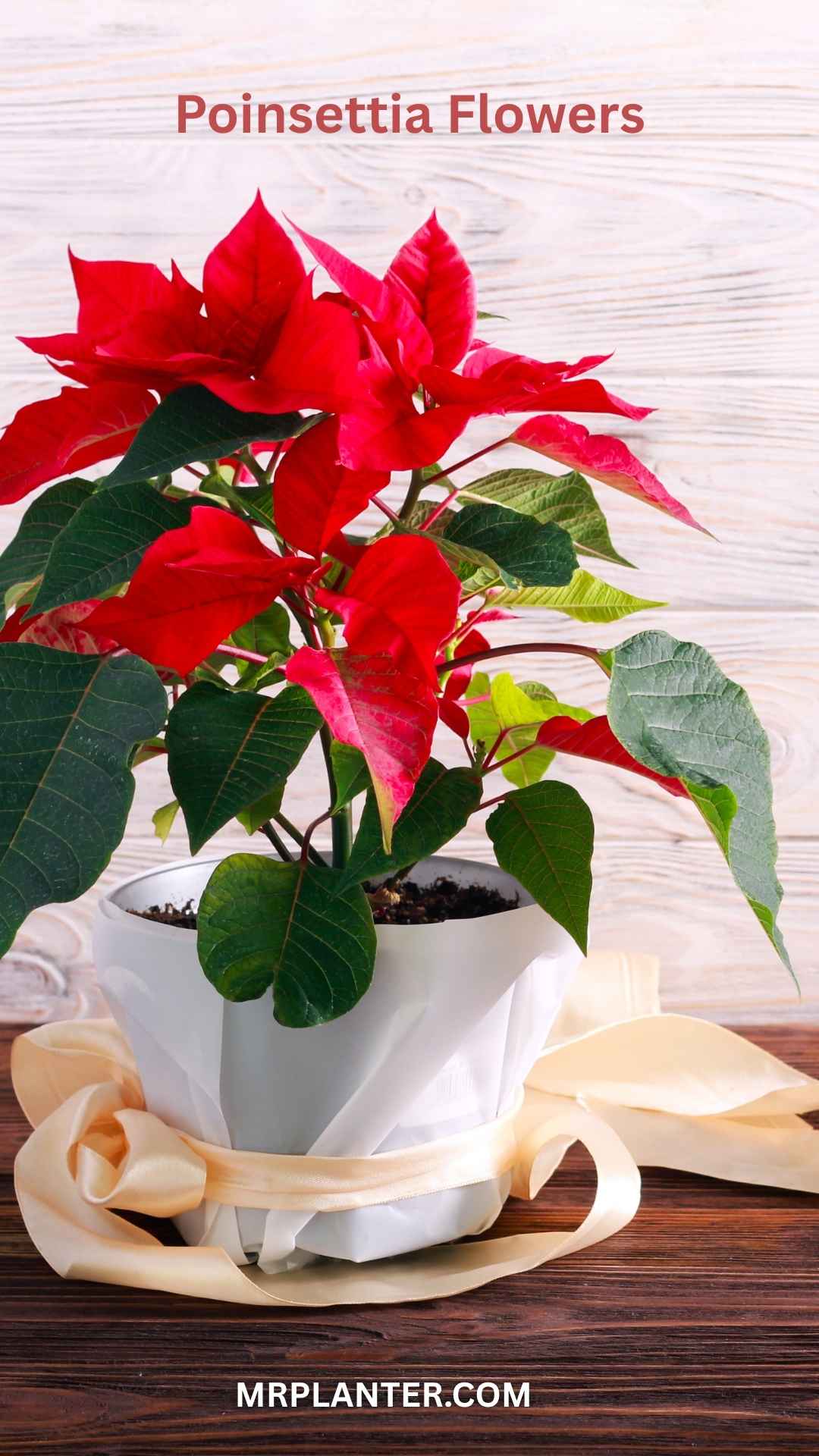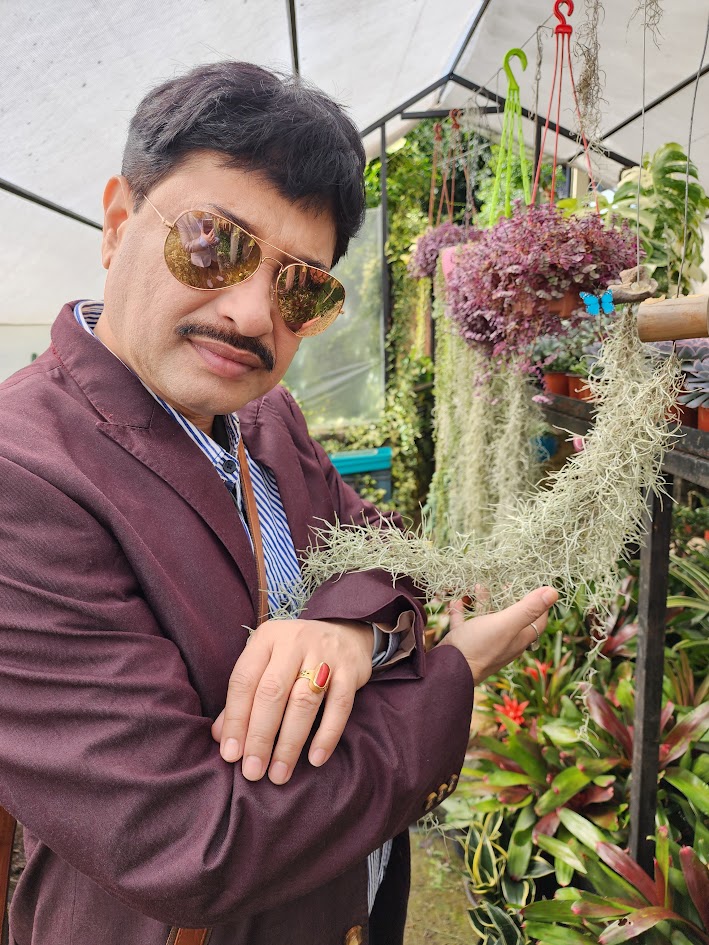Here’s how you can keep your poinsettia healthy and blooming all season. With a bit of care, you might even get it to thrive year after year.
Poinsettias aren’t just festive decorations. They can turn into sturdy, long-lasting plants if you give them a little attention.
If you want your poinsettia to stay bright and healthy, focus on light, temperature, and watering.
Let’s get started!

Ongoing Care for Poinsettia
Poinsettias need a few things to stay happy: sunlight, water, fertilizer, and the right pot and soil.
Let’s break down what actually matters for keeping these beauties going strong.

Sunlight and Placement
Poinsettias love bright light, so where you put them really matters. Try a south, east, or west-facing window if you can swing it.
They do best with about 4 to 6 hours of indirect sunlight each day. If you’re putting them outside, partial sun is perfect.
Full harsh sun? Not so much—it can burn the leaves. Indoors, keep them away from drafty spots or heat vents.
These little changes make a big difference in how vibrant they stay.
Watering Schedule
Watering can make or break your poinsettia.
Keep the soil moist but not soggy—think damp, not drenched. Stick your finger in the soil; if it feels dry, it’s time to water.
Sometimes I just lift the pot—if it feels super light, go ahead and water it. Always use a pot with drainage holes.
Let the extra water drain out, and never let the pot sit in a puddle. That’s the fastest way to root rot, and nobody needs that.
Fertilizing Requirements
Fertilizer isn’t needed while the plant is just hanging out during the holidays.
But once you spot new leaves or stems, it’s time to feed it. Mix up an all-purpose fertilizer at half strength with water.
Give it a dose of fertilizer every 3 to 4 weeks, and you’ll see a healthier, happier plant. Don’t overdo it, though—more isn’t always better.
Ideal Pot and Soil Type
The right pot and soil combo is key. If you’re repotting, go just a bit bigger than the old pot and make sure it has drainage holes.
Pick a well-draining potting mix. You want soil that lets air in and doesn’t hold too much water, but still keeps some moisture.
It’s all about balance here. Good potting means stronger roots and a better-looking plant.
Temperature and Humidity Requirements
Poinsettias thrive in comfortable temperatures—65 to 70 degrees Fahrenheit is just right for them.
Make sure to keep them away from chilly drafts or hot air from heaters, as these temperature extremes can stress the plant and cause its colorful leaves to drop.
They’re surprisingly sensitive to temperature changes. Never let them get colder than 50 degrees Fahrenheit. They’ll start to droop or even lose their leaves.
Humidity helps too—aim for 50% to 75% if you can manage it. A small humidifier nearby won’t hurt, especially in winter.
Pruning and Shaping Your Poinsettia
Pruning keeps poinsettias looking sharp and encourages new growth. For indoor plants, late winter is the best time to prune.
Cut the plant back to about 5 inches above the soil line. This way, it grows back nice and full.
Need more shaping? Go ahead and prune again in late May. Snip off 2 to 3 inches from the branch tips, and you’ll get more branches popping up.
Got your poinsettia outside? Early spring is your time—cut it back to 12 to 18 inches above the soil. This helps it gear up for summer. If it starts getting wild, keep pruning once a month through August.
Just make sure you leave at least 4 leaves on each shoot. For younger plants, pinching out the growing tip works well too. Pruning isn’t just for looks.
It helps with airflow and lets in more light, making for a much happier plant.
Common Pests and Diseases
Poinsettias aren’t immune to pests and diseases. You’ll want to keep an eye out and catch any problems early.
Prevention Tips
Check your poinsettia regularly for bugs or weird spots. A steady watering schedule helps too—don’t let the roots sit in water or you’ll get rot. Good light and airflow are lifesavers, especially for avoiding powdery mildew.
Don’t overdo the fertilizer, or you’ll attract pests like whiteflies. I sometimes use yellow sticky traps indoors to keep tabs on bugs.
Keep the area tidy and clear away fallen leaves or debris. And always check new plants for hitchhikers before bringing them inside.
Treatment Options
If you spot root rot—wilted leaves, stunted growth—change up your watering right away. Sometimes just letting the soil dry out helps, but if it’s bad, you might need to repot in fresh soil.
Powdery mildew shows up as white spots on the leaves. It blocks light, so you’ll want to tackle it with a fungicide meant for mildew.
Always test it on a leaf or two before treating the whole plant. Whiteflies are tricky little pests. They feed on the plant’s juices and leave sticky residue behind.
Insecticidal soap or neem oil can help, but regular checks are your best bet. Staying on top of things keeps these pests in check.
Poinsettia Aftercare
After the holidays, you can actually keep your poinsettia going strong. With a little aftercare, you might even get it to bloom again next year. It’s honestly kind of satisfying.
Poinsettia Care in Winter after Christmas
Post-Christmas, start feeding your poinsettia with a potassium-rich liquid fertilizer—tomato food works great. This helps it stay healthy through winter.
In April, cut it back to about 10 centimeters. That’ll kickstart new growth.
Keep things cool—around 13°C is ideal. In early May, repot into a slightly bigger pot with fresh, peat-free compost.
Pick a warm spot out of drafts, and don’t stick it in direct sun. With these tweaks, your poinsettia’s got a real shot at thriving.
Encouraging Reblooming
If you want your poinsettia to bloom again by Christmas, start by mimicking short days.
Just pop it in a dark cupboard for about 12 hours every day once November rolls around. Try to keep the temperature steady—right around 18°C works best.
Trust me, it makes a difference. Keep your plant far from any artificial light, since that can mess with its blooming mojo.
When you finally spot those little buds, go ahead and mist the leaves each day.
That daily mist keeps the leaves looking fresh and healthy. It’s a simple step, but it pays off.
Common Mistakes to Avoid
To keep your poinsettia thriving, steer clear of these common pitfalls:
- Overwatering: This is the fastest way to root rot. Always check the soil before watering.
- Cold Drafts: Poinsettias hate the cold. Keep them away from drafty windows or doors.
- Direct Sunlight: Too much sun can scorch the leaves. Stick to indirect light.
- Neglecting Pruning: Skipping pruning leads to leggy, weak growth. Regular trims keep the plant full and healthy.
- Ignoring Pests: Pests can sneak up quickly. Regular checks and early action are key.
Final Words
So, here I end this post!
I hope this was helpful and that you now have the right knowledge to take care of your poinsettias at home.
